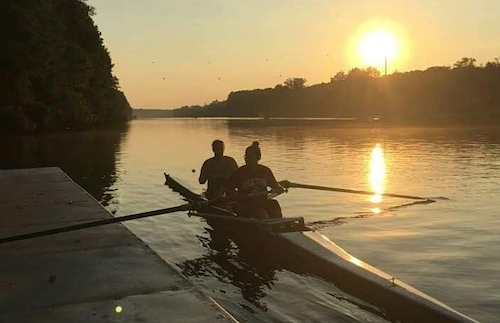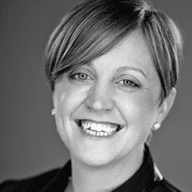
1 in 10,000.
The odds of being struck by lightning in a lifetime or finding a four-leaf clover. It also just so happens to be the same odds as being diagnosed with catecholaminergic polymorphic ventricular tachycardia, a rare adrenaline-induced heart arrhythmia. That’s a bit of a mouthful, let’s call it CPVT for short. We jokingly call it “the club that no one ever wants to belong to”.
I’m Rachelle and nine years ago I had the unfortunate luck of being diagnosed with CPVT. I was 15 years old and just finishing up my freshman year of high school. I had been an athlete all my life. Since I was eight years old, I’d been a competitive swimmer, eventually specializing in butterfly. About two years before my diagnosis, I had started rowing as well. Immediately following my diagnosis, I was banned from anything that could lead to a spike in adrenaline, examples include exercising, competition of any kind, roller coasters, haunted houses, startling noises, etc. I’m pretty sure my first cardiologist would have rather just put me in a bubble because I suddenly was not allowed to do much of anything except exist. He told me to take up piano because, in his words, it was basically the same thing as rowing. He gave me beta-blockers. It’s a good thing they banned me from rowing because I was too tired to do it anyway. I could barely wake up to go to school and then by the end of the day I would take a three-hour nap. To say I didn’t tolerate them well would be an understatement. That nonsense lasted all of three months before I saw a different doctor and the new track that I was on shifted again, but this time for the better.
My new cardiologist, who I still see today, said that he would let me go back to rowing if I had better protection from arrhythmias. That was all I needed to hear; I didn’t want to wait another second. He recommended I get a surgery called a left cardiac sympathetic denervation. We’d had to travel 12 hours so it looked like my mom and I would need to make another trip. Luckily, there was a cancellation so two days later I had the surgery and they started me on another medication. Once I healed from surgery, I was allowed to go back to rowing. At first, I was very slow. I’d been away for months, and the beta-blockers took any residual athleticism and held it hostage. It took me about a year to get my times back to where they were before I left. By the time I’d been diagnosed for a calendar year, I rowed fast enough to medal at a small regatta. I rowed another three years in high school. I also did three musicals. I went to college at the University of Alabama on a full academic scholarship. I majored in Kinesiology and Adapted Sports. I tried to join the varsity women’s rowing team however their team physician would not allow me to join even though my world-renowned cardiologist gave his blessing. In between my freshman and sophomore year my Make A Wish was granted. I went to the 2016 Olympics in Rio de Janeiro. I got to meet my rowing hero, Dr. Gevvie Stone. It gave me the push I needed to get back into rowing after being told I wasn’t allowed to row for a second time. In my sophomore year of college, I joined the men’s club team as 1 of 2 female rowers. We got 4th at regionals in the women’s double. In my junior and senior years, I delved more into my studies with Adapted Sports. I interned at the wheelchair basketball arena and participated in other adapted sports events. I worked all their home games and became good friends with a lot of the players. I graduated from the University of Alabama (Roll Tide!) and went into a master’s program at the University of Pittsburgh in Rehabilitation Science and Technology. Going to graduate school during a worldwide pandemic was an experience, to say the least. Thankfully I graduated in May and that brings us to the present day.
– Contributed by Rachelle Cook, CPVT Community Advocate

